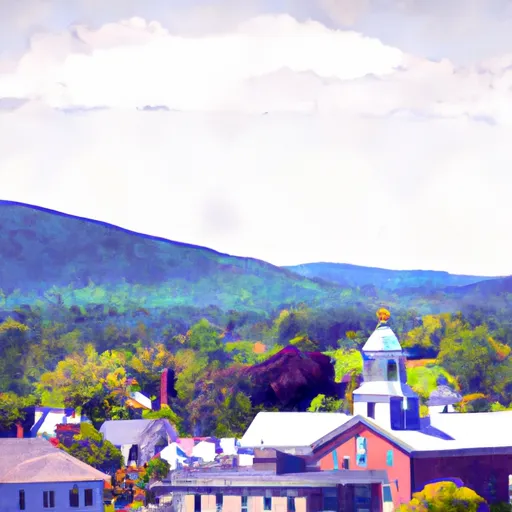-
 Snoflo Premium
Snoflo Premium
Get unlimited access to all our content
With no Ad interruptions! - Start Your Free Trial Login with existing account
Stockbridge
Eden Index
Climate
7.4
•
Recreation
5.5
•
Community
1.2
•
Safeguard
5.2/10

Stockbridge, Vermont is a picturesque town nestled in the heart of the Green Mountains. Known for its scenic beauty and charming rural character, Stockbridge experiences a diverse climate throughout the year. Summers are mild, with temperatures averaging in the low 80s°F. Fall brings vibrant foliage, attracting visitors from near and far to witness the stunning autumn colors. Winters are cold, with average temperatures in the 20s°F and ample opportunities for winter sports enthusiasts.
Hydrology constituents play a significant role in Stockbridge, as the town is home to several rivers and streams. The White River, a popular spot for fishing and kayaking, flows through parts of Stockbridge, offering recreational opportunities for water enthusiasts. Additionally, the town features numerous lakes and ponds, such as Amee Pond and Woodward Reservoir, providing serene settings for swimming, boating, and fishing.
Outdoor recreation is abundant in Stockbridge. The town boasts an extensive network of hiking trails, including the famous Long Trail, which traverses the Green Mountains. Visitors can explore the vast forests, enjoy birdwatching, and spot wildlife in the nearby Green Mountain National Forest. During winter months, residents and tourists alike can indulge in activities like skiing, snowboarding, snowshoeing, and snowmobiling in the surrounding mountain ranges. With its diverse climate, hydrological features, and ample outdoor recreation opportunities, Stockbridge is an idyllic destination for nature lovers and adventure seekers.
What is the Eden Index?
The Snoflo Eden Index serves as a comprehensive rating system for regions, evaluating their desirability through a holistic assessment of climate health, outdoor recreation opportunities, and natural disaster risk, acknowledging the profound impact of these factors on livability and well-being.
Climate Health Indicator (CHI): 7.4
Stockbridge receives approximately
1179mm of rain per year,
with humidity levels near 78%
and air temperatures averaging around
6°C.
Stockbridge has a plant hardyness factor of
4, meaning
plants and agriculture in this region thrive during a short period during spring and early summer. Most
plants will die off during the colder winter months.
By considering the ideal temperature range, reliable water supplies, clean air, and stable seasonal rain or snowpacks, the Climate Health Indicator (CHI) underscores the significance of a healthy climate as the foundation for quality living.
A healthy climate is paramount for ensuring a high quality of life and livability in a region, fostering both physical well-being and environmental harmony. This can be characterized by ideal temperatures, reliable access to water supplies, clean air, and consistent seasonal rain or snowpacks.
Weather Forecast
Streamflow Conditions
Upper Connecticut
Area Rivers
Upper Connecticut
Snowpack Depths
Upper Connecticut
Reservoir Storage Capacity
Upper Connecticut
Groundwater Levels
Recreational Opportunity Index (ROI): 5.5
The Recreational Opportunity Index (ROI) recognizes the value of outdoor recreational options, such as parks, hiking trails, camping sites, and fishing spots, while acknowledging that climate plays a pivotal role in ensuring the comfort and consistency of these experiences.
Access to outdoor recreational opportunities, encompassing activities such as parks, hiking, camping, and fishing, is crucial for overall well-being, and the climate plays a pivotal role in enabling and enhancing these experiences, ensuring that individuals can engage in nature-based activities comfortably and consistently.
Camping Areas
| Campground | Campsites | Reservations | Toilets | Showers | Elevation |
|---|---|---|---|---|---|
| Grout Pond | None | 2,303 ft | |||
| Silver Lake State Park | 40 | 1,385 ft | |||
| Gifford Woods State Park | 48 | 1,606 ft | |||
| Winhall Brook | 110 | 1,071 ft | |||
| Hapgood Pond | 28 | 1,548 ft | |||
| Calvin Coolidge State Park | 60 | 1,684 ft | |||
| Chittenden Brook | 17 | 1,844 ft | |||
| Jamaica State Park | None | 873 ft | |||
| Greendale | 11 | 1,738 ft | |||
| Townshend State Park | 35 | 586 ft |
Nearby Ski Areas
Catastrophe Safeguard Index (CSI):
The Catastrophe Safeguard Index (CSI) recognizes that natural disaster risk, encompassing floods, fires, hurricanes, and tornadoes, can drastically affect safety and the overall appeal of an area.
The level of natural disaster risk in a region significantly affects safety and the overall livability, with climate change amplifying these risks by potentially increasing the frequency and intensity of events like floods, fires, hurricanes, and tornadoes, thereby posing substantial challenges to community resilience and well-being.
Community Resilience Indicator (CRI): 1.2
The Community Resilience Indicator (CRI) recognizes that education, healthcare, and socioeconomics are crucial to the well-being of a region. The CRI acknowledges the profound impact of these elements on residents' overall quality of life. By evaluating educational resources, healthcare accessibility, and economic inclusivity, the index captures the essential aspects that contribute to a thriving community, fostering resident satisfaction, equity, and social cohesion.

